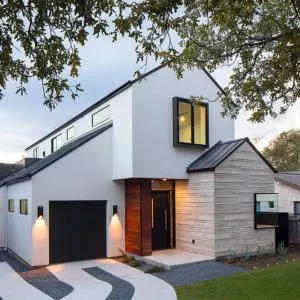Table of Contents
Housing starts in the United States are expected to approach 1.25 million in 2018, an increase of 2.7 percent from 2017 but still short of the 1.5 million justified by population growth.
That’s according to the National Association of Home Builders and its chief economist, Robert Dietz.
NAHB forecasts 1,248,000 total housing starts for 2018, compared to 1,215,000 in 2017.
Broken down, 2018 starts are expected to include 893,000 single-family units, up from 854,000 in 2017, and 354,000 multifamily units, down from 360,000 in 2017.
The forecasts draw considerable attention from all housing industry sectors, especially cabinet makers and others involved in kitchen and bath construction, because housing starts correlate directly with demand for kitchen and bath fixtures and materials.
Single-family growth in 2018 would continue a steady incline that has seen starts grow from 620,000 in 2013. Multifamily construction, on the other hand, peaked at 395,000 units in 2015 and has fallen each year since.
In an NAHB construction forecast webinar, Dietz said housing inventory would remain tight for the foreseeable future, and he cited “three Ls” as primary reasons: labor, lots and lending.
“We have a labor shortage in the construction sector … The workforce is smaller, and there are lot more unfilled jobs,” he said. “That’s the reason the labor issue appears at the top of labor challenges. We simply don’t have enough workers—builders and remodelers.”
One partial remedy could be increased productivity, Dietz said, noting that construction sector productivity is up just 3 percent since 1993, compared to 30 percent for the rest of the economy.
“Maybe that means more factory-built components, more panels, more modular construction,” he said. “We’re going to have to get more productivity out of our workforce because the worker shortage doesn’t look like it will change.”
Regarding the other two “Ls,” Dietz said lot supplies are “low or very low,” still struggling to recover after the land development pipeline dried up during the recession, while lending growth remains slow because of the higher regulatory burden of Dodd-Frank.
Remodeling
Residential remodeling is projected to grow a robust 7.5 percent in 2018 to nearly $340 million, continuing a growth trend that began in 2016, said Manuel Gutierrez, consulting economist to the National Kitchen & Bath Association.
The rooms that typically see the most spending are kitchens and baths, which are likely to generate a greater return on investment than other rooms, and Gutierrez expects spending on them to increase 9.4 percent for the year. That breaks down to about 10 percent for kitchens and 8 percent for baths.
Gutierrez cited two “major policy events” as stimulating factors for remodeling growth: the federal tax reform act and a reduction in regulations.
“The federal tax reform act … has changed radically the tax structure in the nation. This will impact directly consumers’ pocket book by lowering their tax burden and thereby increasing their take-home pay,” he said.
Reducing regulations should make doing business easier, Gutierrez said, although the impact is more subtle and difficult to measure. “Nonetheless, it’s expected the changes will improve business productivity in the future.”
Two other factors that influence the optimistic outlook are household mobility and home ownership. Both have turned positive in the last few years after consistent declines. That’s a good thing for the remodeling industry because homeowners remodel at a higher rate than rental property owners, he said, and people are more likely to remodel after they move into new homes.
Leah Peterson, executive vice president of the SEN Design Group, which is the kitchen and bath industry’s largest buying group, predicted that growth would be steady for the remodeling industry in 2018.
“Our kitchen and bath showroom and design/build firm members across the country continue to be extremely busy, booking jobs several months out and, in some cases, by more than three months’ time,” she said.
The majority of SEN Design’s members have planned 5 to 10 percent sales increases and 2 to 4 percent increases in net profit. Consumer spending should remain strong through the first half of 2019, absent a world event, Peterson said.
“While business is strong, it's vital business owners truly understand their financials and pad their bank accounts. This will help ensure their viability through the next recession and a faster rebound for all of us when we come out of it," she said.
Long term
In the NAHB webinar, Mark Zandi, chief economist for Moody’s Analytics, said prospects are good for the economy continuing to perform well through the end of the decade. The current economic expansion, which is in its ninth year, is the third longest in history and is likely to pass the 10-year tech expansion of the 1990s as the longest ever.
“I do expect housing to lead the way,” Zandi said. “I expect more entry-level homes at lower price points to be built. There is clearly a dearth of homes for that segment of the housing market.”
Dietz said his forecast does not include a recession over the next few years and instead projects “modest growth.” Extended to five or six years, however, the chance of a recession grows to 50 percent, he said.
NAHB’s numbers show total housing starts growing to 1,284,000 in 2019, including 940,000 single-family units and 344,000 multifamily. The association expects the prime interest rate to climb to 4.98 percent in 2018 and 5.66 percent in 2019.
Despite the growth, single-family starts in the foreseeable future will remain below the 1.5 million justified by population trends, Dietz said.






